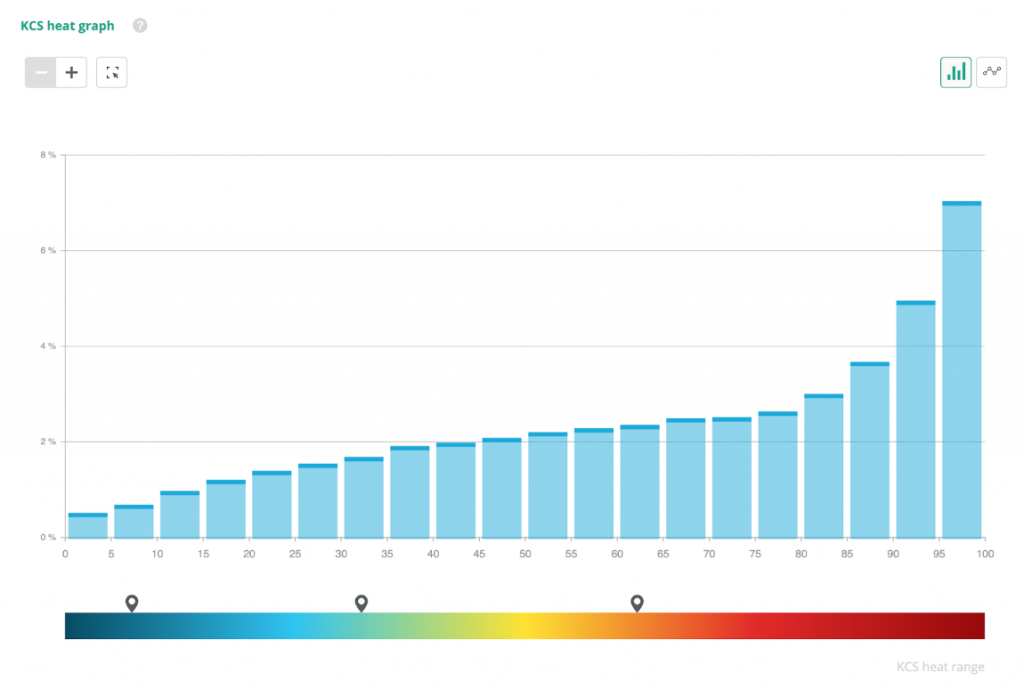
How can an algorithm predict the conversion behavior of new visitors?
One of the key strengths of our AI personalization platform is its ability to measure, in real-time, the conversion intent of all your online visitors, whether customers or prospects, identified or anonymous.
Consequently, we’re often asked a key question by digital marketers: - "How can your algorithm predict the behavior of first-time visitors that I have no information on?"
Our algorithms are not magic. Yet, they are able to predict the likelihood of a visitor converting based on their first 15 seconds on a website. To understand how this works, we spoke to Frédéric De Todaro, Kameleoon’s Chief Customer Officer, and he gave more details.
1. Can you explain how Kameleoon’s algorithm can predict conversion probability in just 15 seconds?
With Kameleoon, segmentation isn’t solely based on so-called "cold" data, from your CRM and DMP systems, or information collected during previous visits in the case of a returning user.
Our AI personalization platform, Kameleoon Predict, also collects "hot data" on your visitors in real-time. This relates to their current behavior on your site and directly reflects the context of their current visit. Research studies, including this one, into the factors that influence purchasing demonstrate that it is precisely this behavioral data (along with information on past transactions), that has the greatest weight when it comes to explaining conversion.
This is why the ability to collect, analyze and process information in real-time is absolutely key. To learn how Kameleoon Predict manages this data in real-time, take a look at this blog post.
To test our platform, we recently conducted a study across all of our clients that rely on AI to identify their optimal targets for conversion. This looked to find the minimum time it takes for our algorithms to accurately predict whether a new visitor would convert, based solely on their behavior and the context of the visit.
The result - it takes just 15 seconds for Kameleoon's AI to begin to accurately predict the likelihood of conversion for a new visitor.

15 seconds may seem like an incredibly short time, but coincidentally that’s how long the majority of visitors stick around on a website before leaving.
Thanks to the power of our algorithm, 15 seconds is long enough to analyze an impressive amount of data about a visitor. This gives a very clear idea of their likelihood of conversion. When a new visitor arrives on your site, our AI is able to gather a lot of data right from the first second, such as on the type of device used, the landing page and the acquisition channel, for example.
It is important to bear in mind that we don’t stop at 15 seconds though. Kameleoon Predict not only calculates a visitor’s conversion intention at this single moment, but follows the evolution of this intention for the entire duration of the visit. This conversion probability will vary throughout this period. Nevertheless, Kameleoon Predict will be able to decide whether it is relevant or not to push an offer, a message or a promotion from the first 15 seconds of data.
2. What does this mean for Kameleoon customers?
Real-time is at the heart of a personalization strategy, and only the combination of AI and the right software architecture provides that capability.
Each visitor's intention to purchase evolves over time, even on a single visit. Kameleoon Predict makes it possible to follow this evolution, triggering the right interactions at the right moments. Measuring and identifying specific conversion signals and launching an appropriate action therefore take place instantaneously – there is no lag.
This is different to the traditional approach to segmentation. This sees visitors categorized based solely on previously collected cold data. This backward looking approach doesn’t necessarily directly relate to their likelihood of converting on this specific visit.
Moving to a predictive approach transforms personalization and allows brands to truly tailor the experience. By processing hot data in real-time, digital marketers can understand, anticipate and meet the expectations of their visitors. Actions that are triggered are much more relevant since they happen at exactly the optimal moment for conversion..
To learn more about data collection within AI personalization, read our previous blog here.


